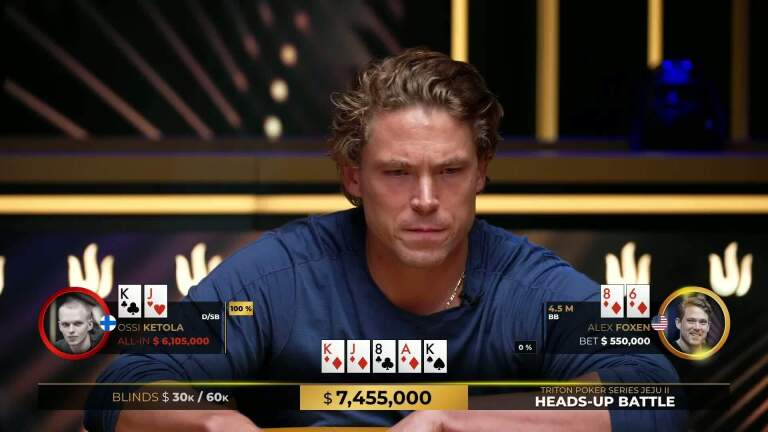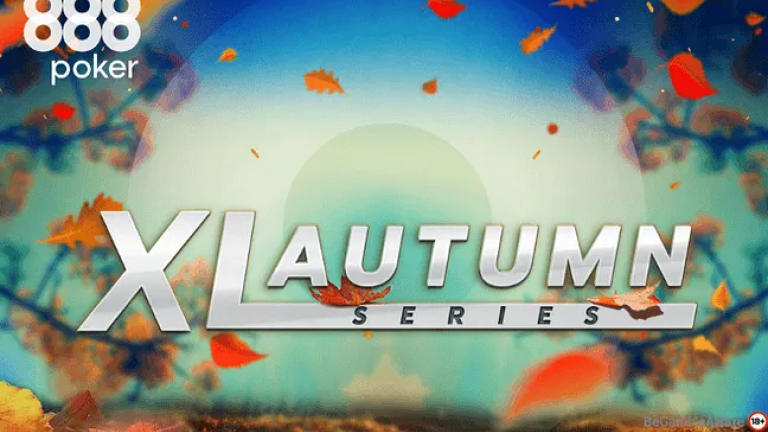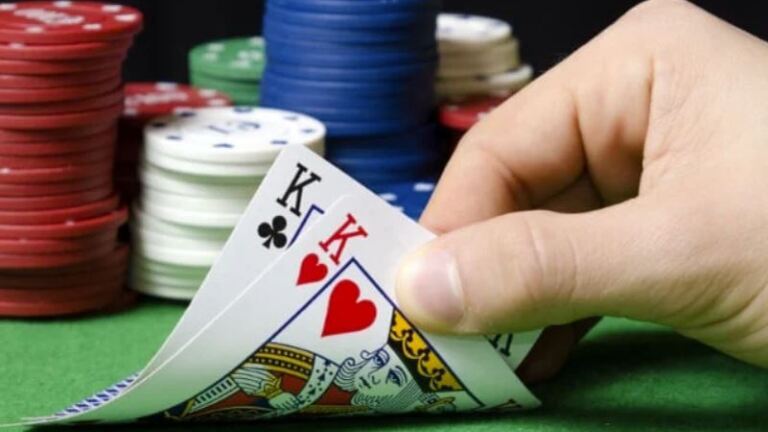Good equity in pre-flop all in situations
One of the main characteristics of this hand is that it has a tremendous equity following a pre-flop raise(2bet)-3bet-4bet-5bet all in situation against the zone of a player who is following the average strategy guidelines. By using these tactics you can stand in the line of fire with confidence, because it is possible that your opponent will fear your strength and topple out of the game following your 3bet, 4bet, or 5bet. It is easy to count on a high fold equity if you abide by these guidelines when playing AK. It has worked for me.
Situation no.1
Hero (SB) ($1165.50) (Hero’s statistics in all games listed below abide by these numbers: 27/21/7)
BB ($1086.50) (23/17/5)
UTG ($1074)
MP ($1040)
Button ($1930.80)
Preflop: Hero is SB with


3 folds, Hero bets $25, BB raises $90, Hero raises $233, 1 fold
Total pot: $200
Results:
Hero didn't show  A
A  K (nothing).
K (nothing).
Outcome: Hero won $363
With the help of the PokerStove we can see what exact equity is guaranteed if it comes down to the final all in (against the range of a player who is following the average strategy guidelines):
equity win tie pots won pots tied
Hand 0: 49.175% 38.86% 10.32% 29939770 7951130.50 { AhKs }
Hand 1: 50.825% 40.51% 10.32% 31211649 7951130.50 { TT+, AQs+, AQo+ }
PREFLOP PLAY
Optimal preflop play depending on position and your opponents
Most of our opponents’ preflop statistics would resemble the following (or higher): VPIP=17% / PFR=13% / 3bet=3%. It is easy to state that if we follow the preflop raise(2bet)-3bet-4bet-5-bet line mentioned above, mistakes and losses can be avoided.
Situation no.2
Button ($281.30)
SB ($1147)
Hero (BB) ($1000) (Hero’s statistics in all games listed below abide by these numbers: 27/21/7)
UTG ($1000)
MP ($1063) (22/17/6)
Preflop: Hero is BB with


1 fold, MP bets $35, 2 folds, Hero raises $100, MP raises $200, Hero raises $890 (All-In), MP raises $828 (All-In)
Flop: ($2005) (2 players, 2 all-in)



Turn: ($2005) (2 players, 2 all-in)

River: ($2005) (2 players, 2 all-in)

Total pot: $2005
Results:
Hero had  K
K  A (two pair, Aces and fives).
A (two pair, Aces and fives).
MP had  T
T  T (two pair, tens and fives).
T (two pair, tens and fives).
Outcome: Hero won $2003
Of course, it must not be overlooked to fine-tune our game in accordance to the player’s statistics. When looking at the opponent’s statistics, it is important to note if the player is at the bottom of the food chain or follows a much more loose and aggressive strategy.
In the case of the opponent opening with a raise, we need to take into consideration whether he did this from Under The Gun (UTG) or from middle to late position. If our opponent has raised from UTG, his preflop statistics (20/17/5, for example) will become void, because the raising zone of the UTG position is much narrower than what the numbers show. So, if we use the preflop raise(2bet)-3bet-4bet-5bet line against a tight UTG preflop raiser (17/13/3 – 20/17/5), a high profit return is not a guarantee in my opinion. This is because he will immediately respond by folding the weaker part of his narrow raising range (against which we would have good odds postflop) and we can count on a close-to-zero expected value against the other part of his range in the case of a preflop all in.
So, in the extraordinary case of the UTG (usually playing tight) being the initial raiser, I would recommend a more passive play. If we are in good position, it is advisable to only call preflop (given that there are no cold callers between the raiser and ourselves). Following this, the game would run pretty conveniently for us postflop. If the flop doesn’t hit us, we fold to the cbet of our opponent. If an Ace or a King turns up, we keep calling throughout the whole hand (given that the board is not too scary) and value bet if the competitor decides to check within the hand. It is important to note that if the flop hits us both, we will dominate our opponent’s cards most of the time, which again will turn into a serious profit-generating circumstance.
Situation no.3
SB ($2337.75)
BB ($1279)
UTG ($1050) (28/22/6)
Hero (MP) ($1250)
CO ($1415.80)
Button ($984)
Preflop: Hero is MP with


UTG bets $35, Hero calls $35, 1 fold, Button calls $35, 2 folds
Flop: ($120) (3 players)



UTG bets $85, Hero calls $85, 1 fold
Turn: ($290) (2 players)

UTG bets $170, Hero calls $170
River: ($630) (2 players)

UTG bets $400, Hero calls $400
Total pot: $1430
Results:
UTG had  A
A  J (three of a kind, Aces).
J (three of a kind, Aces).
Hero had  K
K  A (three of a kind, Aces).
A (three of a kind, Aces).
Outcome: Hero won $1427
If the UTG is LAG (Loose-Aggressive), (let’s say he has the following stats: 26/23/7+), then it is acceptable and advisable to play the preflop(2bet)-3bet-4bet-5bet line.
It also has to be mentioned that if we are holding AK on the blinds, the preflop 3bet would be the best solution in this situation as well. A big disadvantage of only calling is that we will be out of position postflop, which makes it hard to realize profit during postflop gameplay.
If we 4bet with AK, we are already committed to the pot
I find this important to emphasize. A lot of opponents 5bet with a very wide range nowadays. The following is an average 5bet all in range: 88+, AQ+. However, in the case of a number of opponents, this range will widen and include hands like middle suited connectors, KQs, AJs and so on.
A fold should never be on our mind following the 4bet, as we have our equity secured against any ‘unbiasedly’ narrow 5bet all in range.
Situation no.4
Hero (Button) ($1188)
SB ($1644.75) (20/17/6)
BB ($1985)
UTG ($1000)
MP ($964)
Preflop: Hero is Button with


2 folds, Hero bets $35, SB raises $115, 1 fold, Hero raises $200, SB raises $1524.75 (All-In), Hero calls $953 (All-In)
Flop: ($2386) (2 players, 2 all-in)



Turn: ($2386) (2 players, 2 all-in)

River: ($2386) (2 players, 2 all-in)

Total pot: $2386
Results:
Hero had  A
A  K (high card, Ace).
K (high card, Ace).
SB had  Q
Q  Q (one pair, Queens).
Q (one pair, Queens).
Outcome: SB won $2840.75
So why are we committed? Let’s crunch the numbers against a narrow 5bet all in range!
equity win tie pots won pots tied
Hand 0: 48.250% 40.06% 08.19% 39102379 7990517.50 { AdKc }
Hand 1: 51.750% 43.56% 08.19% 42517914 7990517.50 { 88+, AQs+, AQo+ }
Equity is= 48.250%
Pot odds: 953/2386 = 39,94%
Gameplay against shortstack players
When facing shortstacks with 10-36 big blinds, I always re-raise preflop and most of the time all the money gets pushed in preflop. If they only call, we toss in all our chips on the flop (cbet all in or call all in), independent from the actual board.
Situation no.5
SB ($284) (13/13/9)
Hero (BB) ($3058.85)
Preflop: Hero is BB with


SB bets $15, Hero raises $88, SB calls $78
Flop: ($196) (2 players)



Hero bets $196, SB calls $186 (All-In)
Turn: ($568) (2 players, 1 all-in)

River: ($568) (2 players, 1 all-in)

Total pot: $568
Results:
SB had :h5 :sA (high card, Ace).
Hero had :dK :cA (high card, Ace).
Outcome: Hero won $577
Situation no.6
BB ($493)
UTG ($1606.50)
MP ($180) (20/10/7)
CO ($975)
Button ($1545.50)
Hero (SB) ($2536)
Preflop: Hero is SB with


1 fold, MP bets $35, 2 folds, Hero raises $110, 1 fold, MP raises $145 (All-In), Hero calls $65
Flop: ($370) (2 players, 1 all-in)



Turn: ($370) (2 players, 1 all-in)

River: ($370) (2 players, 1 all-in)

Total pot: $370
Results:
Hero had  A
A  K (one pair, fives).
K (one pair, fives).
MP had  Q
Q  K (one pair, fives).
K (one pair, fives).
Outcome: Hero won $367
When it comes to shortstacks with 37-65 big blinds (these are mostly hobby players or fishes), I only call their raise. I find re-raising a bad decision in this case, because a lot of times the opponents only call and the ratio of the money already gathered in the pot and the money in front of the shortstack is not of optimal value. If we look at the shortstack, we can see that the opponent will have in front of him 1.5-2x the amount in the pot and this will have an inconvenient result if the flop does not hit us. A player can sense more value in the game if they decide to only call preflop and continue depending on the flop’s outcome. Also taking into consideration that the competition within this zone is the weakest, there is greater value in the passive preflop play that continues depending on the flop.
With what stack sizes is it advised to go all in with AK preflop?
On average, it can be said that a player doesn’t need to alter his preflop strategy up to around 150 big blinds deep. Of course, this is dependent on the opponent as well. When looking at tight players, we must remain careful and more passive. Against very loose opponents, we can abide by the gameplay illustrated above even at a around 170 big blinds.
POSTFLOP GAMEPLAY
We 3bet and our opponent only calls
If we land in a situation where the flop hits us (let’s say an Ace or a King turns up or we get blessed with a nut flush draw) , the cat’s in the bag. At a 100 big blinds deep, nothing restrains us from cbetting and putting all our money in the pot later on. The reason for this is that the sum of the pot following preflop action and our cbet will be so substantial that we will easily have our equity against the opponent’s range.
Situation no.7
(Sidenote: this was a preflop 4bet game and the postflop gameplay of the opponent is quite suspicious, but looking at the flop and money in the pot, we don’t really have any other option on the flop than to 2bet all in. Two situations can arise from this: the opponent either folds, or if they choose to call, we pretty much have our equity secured against the opponent’s calling range.)
Hero (BB) ($946)
UTG ($2992.75)
MP ($1073)
Button ($1000)
SB ($1033) (22/15/6)
Preflop: Hero is BB with


3 folds, SB calls $5, Hero bets $20, SB raises $80, Hero raises $188, SB calls $128
Flop: ($436) (2 players)



SB bets $150, Hero raises $728 (All-In), SB calls $578
Turn: ($1892) (2 players, 1 all-in)

River: ($1892) (2 players, 1 all-in)

Total pot: $1892
Results:
SB had  9
9  9 (three of a kind, nines).
9 (three of a kind, nines).
Hero had  K
K  A (one pair, Aces).
A (one pair, Aces).
Outcome: SB won $1890
Naturally, there are some flops where we need to be very careful even if we flopped a pair. We should be using pot control if possible (whenever we’re in late position or our stack exceeds 100 big blinds). A good example for this is when AQJ comes on the flop. This is a very sensitive flop, taking into consideration that it can hit our opponent’s calling range (AQ, AJ, QJs, JJ or QQ). If we are in position, a checkback would probably be a good idea, seeing that our opponent will only follow us with a better hand if we cbet.
The situation is much harder if we are out of position on the flop. In this case I would recommend a cbet valuing 65% of the pot, and if the opponent calls or re-raises, it is time to pull the brakes. I would be happy to hear what others think about this, but at 120+ big blinds deep, the best thing to do to a re-raise would be to fold.
There are also the cases when the flop does not hit us. Here we have to decide between cbetting or checking depending on the flop (not so much on our opponent). On a two-colored 795 flop, for example, it would not be advised to cbet. On the contrary, if the board pairs, it would be worth to cbet, as the flop probably missed our opponent too.
Situation no.8
MP ($1167.25)
CO ($1888.10)
Button ($1480) (22/18/6)
SB ($1836)
Hero (BB) ($1103.75)
UTG ($1257)
Preflop: Hero is BB with


3 folds, Button bets $30, 1 fold, Hero raises $85, Button calls $65
Flop: ($195) (2 players)



Hero checks, Button bets $142, Hero folds
Total pot: $195
Results:
Button didn't show
Outcome: Button won $334
The optimal size of the flop cbet following a 3bet
Whenever we connect to the flop and there is a danger of some kind of draw, it is worth betting around 2/3 of the pot.
If we connect, but the board is dry, I would recommend a bet around 1/2 - 2/3 of the pot.
If the flop doesn’t hit us, but I decide to cbet, I choose the amount of the bet by making it look credible from the opponent’s point of view. If we choose a smaller flop cbet size and our opponent calls, we still have the chance for a second barrel on the turn. This is worth trying, especially against opponents who usually float a lot.
We only raised preflop, so there was no 3bet. How to continue on the flop?
This article has mainly been dealing with 3bet-4bet-5bet situations. To finish with, let’s say a few words about the cases where we only raised preflop and one or more opponents called. Of course, we have to continue depending on the flop in these cases, just the way we would in a 3bet game. The tactics mentioned there can more or less be applied here, with one main difference: if the flop hits us in a 3bet game and we cbet, we pretty much have to call the opponent’s re-raise, while in a simply raised game we need to be very careful and prepared to fold. If our cbet gets re-raised on an Ace or King high board, folding would be the best decision most of the time. One exception is, if with opponent has a maximum of 50 big blinds. Namely because with 50 big blinds we would never fold a hand like TPTK or an overpair.















0 comments